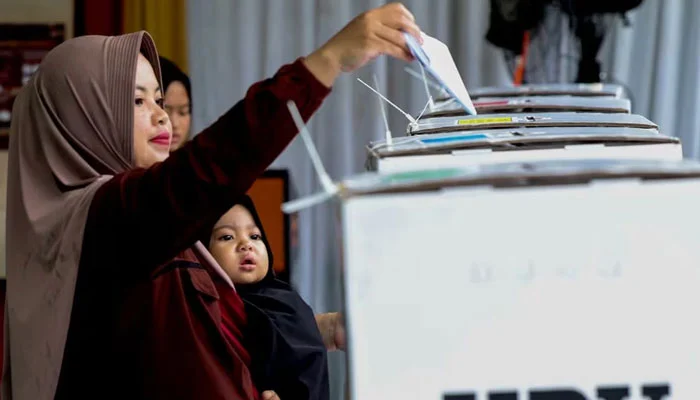Indonesians on Wednesday participated in an election to succeed President Joko Widodo, whose influence could determine the future of the world’s third-largest democracy, across the Southeast Asian archipelago.
The world’s largest single-day election, involving nearly 259,000 candidates contesting 20,600 posts across 17,000 islands, is focusing on the presidency and the fate of Widodo’s ambitious agenda after a decade in charge of the $1.3 trillion economy, Reuters reported.
The Indonesian presidential race to replace Widodo, also known as Jokowi, involves ex-governors Ganjar Pranowo and Anies Baswedan, and frontrunner Prabowo Subianto, a former special forces commander feared in the 1990s.
Two recent surveys predict that Prabowo would win the majority of votes and avoid a second round, with 51.8% and 51.9% support.
Presidential candidate Prabowo Subianto waves at a polling station during the general election in Bogor, West Java, Indonesia, February 14, 2024. — Reuters
Presidential candidate Prabowo Subianto waves at a polling station during the general election in Bogor, West Java, Indonesia, February 14, 2024. — Reuters
To win outright, a candidate needs over 50% of votes and 20% of the ballot in half of the country’s provinces.
Novan Maradona, 42, an entrepreneur, said after voting in central Jakarta he wanted a candidate who would continue policies currently in place.
“If we start over from zero, it will take time,” he said.
Voters have a six-hour window to cast ballots. Indonesia has three time zones and polling stations across the country are now open, with voting in western areas due to close by 0600 GMT.
Polling got off to a slow start in Jakarta, with big thunderstorms causing flooding in parts of the capital.
The extent of delays was not clear nor whether it would impact voter turnout but Jakarta’s disaster management agency shared photographs of a flooded polling station as officials moved voting materials to a safer location.
Initial indications of the result are expected to emerge later on Wednesday, based on publicly counted votes from a sampling of polling stations across the country. In previous elections, the unofficial counts tabulated by reputable companies have proved to be accurate.






